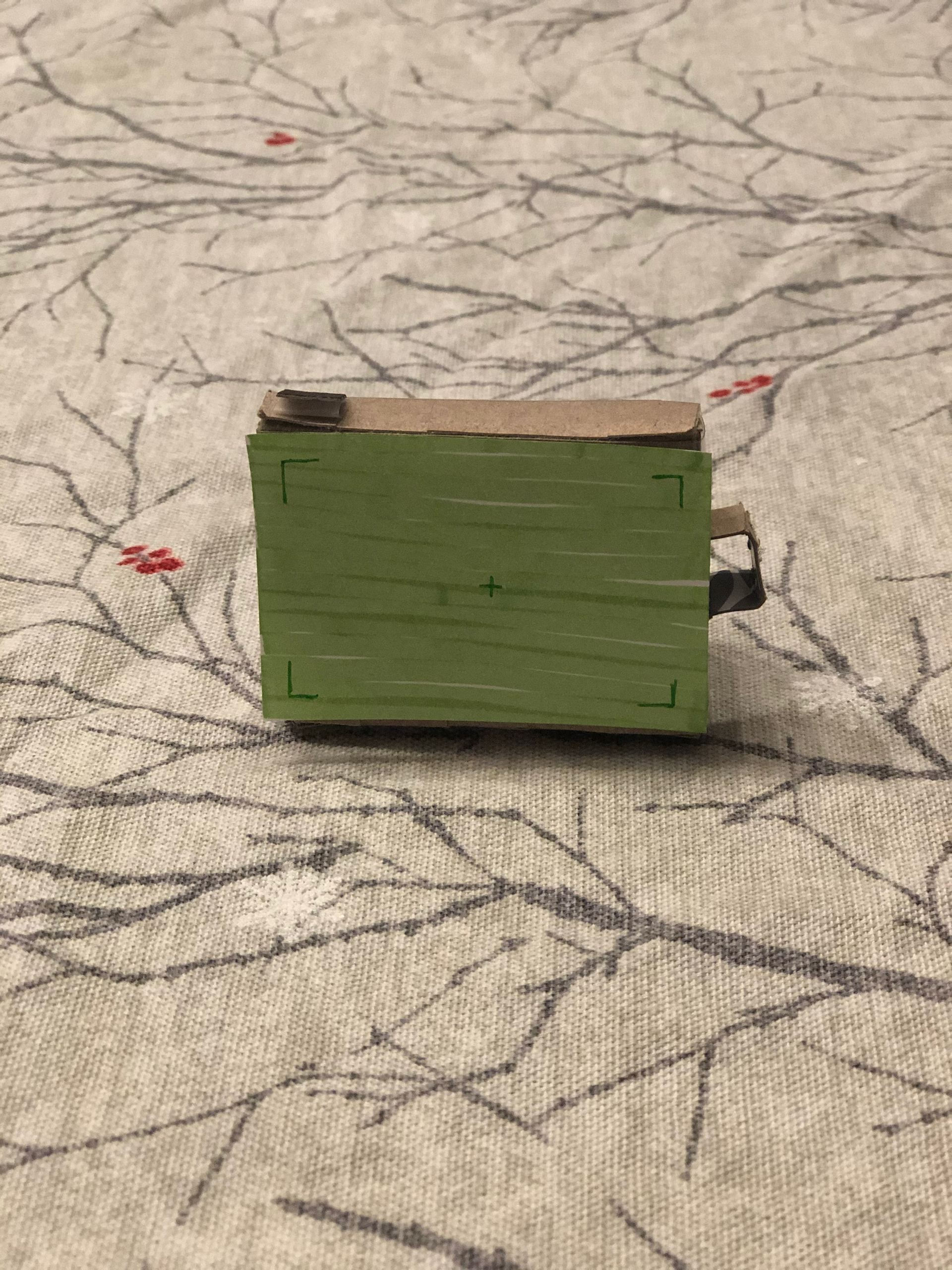Showcasing my prototype-- and my dog, Fuji!
Design
The goal for this product is to act as a supporting tool in removing pests for dog owners in addition to accessories like a flea & tick collar or supplements. Sometimes the formulas in these repellants don’t guarantee keeping all pests away, and even with a short-haired dog, it can be hard to detect a bug as small as a poppy-seed crawling around your four-legged friend.
The Portable Pest Control prototype is a clip-on device for dog owners to help detect any suspicious bumps or bugs on their pet. Using a comb with camera-like ends, users can see a close-up scan of the surface of their pet’s skin and potentially any unwelcome pests. Additionally, the interface of the device can identify what specific pest was on the pet, and determine whether or not any bumps require further treatment. The comb can also catch any of these pests as it goes through the pet’s fur, making pest removal much easier as opposed to using your fingers.
What
A clip-on device that combs out any unwanted pests on dogs.
Who
Intended for dog owners or people with furry, four-legged pets.
Why
To make it easier to detect and remove pests.
Sketching
I first sketched out my ideas on my iPad. The original concept for this project was an attachment to a dog’s collar as a way to detect any bugs that jump on them in the first place. The initial prototype was intended to be a wearable for the dog, but my later sketches focused on a clip-on attachment that could be worn by the dog or the dog owner.
My main focus with these sketches were to capture the frame of product, the details of the interface, and any additional features/components like buttons. Below, you can see sketches of my ideation process.
Current Iteration
After reiterating on my sketch, I decided to focus on a component that would not only detect the bugs, but also act as a point of intervention to remove them.
Initial Concept Sketch
Iterated Concept Sketch
Prototype
I made my prototype from a tissue box, measuring tape, pen, scissors, utility cutter, and scotch tape. I specifically picked a tissue box because I knew that the material was thin enough to cut and bend.
How it works
A user can attach the Portable Pest Control to their clothing or on the dog's collar. The Brush Scanner connects to an online veterinary manual or bug encyclopedia to determine any pests or bumps.
Physical Prototype
The Portable Pest Control prototype comes with four features:
1. Interface
Depicts and determines what is being scanned.
2. LED Light
Shows whether the device is on or off and if something is detected on the dog.
3. Scanner Brush
The component that displays the surface of what's being brushed (i.e. a dog) and removes any pests.
4. Clip On Backing
An attachment that holds onto whatever it is clipped on to (i.e. clothing, collars, etc.).
The Interface + LED Light
The image on the left depicts the screens and LED that one could typically expect when using the Portable Pest Control. The description below describes what the meaning of these lights are:
Black Light
The device is not currently active/scanning anything.
Green Light
The device is currently scanning and does not see any disturbance on the surface of the pet.
Red Light
The device is currently scanning and detects a disturbance on the surface of the pet (i.e. a bug bite or a dog tick).
The image below this one depicts how the brush would detect the bug in the first place.



Brush Scanner
After pressing the button located on the side of the Portable Pest Control, the brush scanner comes out.
The LED light turns on, and it actively scans whatever surface it touches. When it detects a bug, the LED light turns red. The device determines what the pest is, and displays the information on the interface.
Analysis
Through in-class breakout room sessions, I presented my prototype to my peers and explained its functionality. Additionally, I presented this prototype to one of my family members and evaluated some successes and failures from there. I was able to receive critique and make changes to my current prototype, and I reflected throughout this process on several things:
Desirability
In terms of desirability, some pet owners agreed that this tool could be useful especially for their pets that go outdoors (such as outdoor cats!). One of my peers suggested that there should be an additional component of detecting bugs, like a t-shirt for the dog, in case they weren't able to spot the bug in the first place. This made me consider the following for future iterations:
• The device should be paired with another tool to detect bugs in the first place
• The device should connect to an app to store data or information for future reference
Usability
I learned very quickly that this was nearly impossible to test with my family member. Just trying to communicate the idea to them led to questions like:
• "What does this button do?"
• "What does this screen mean?"
• "How do I know if this is working?"
From these questions, I realized that there was a lack of visual cues to tell if something was spotted in the first place, so I added components like the LED light and a cleaner interface to make it clear that the device was on and working.
Another thing I received feedback on was the button feature. I don't think it's as intuitive that the brush scanner comes out with a push of a button. In future iterations, I'd consider making a slider button/toggle to control the brush scanner.
Feasibility
I think the most important piece of feedback I received was the feasibility and realistic use of this product: my participant noted that if it was difficult to spot pests in the first place, then they wouldn’t know when to use the product in the first place. Additionally, I think that creating a reliable scanner to determine bug types or the severity of bug bites/bumps is near impossible. I would also consider the following design considerations for future iterations:
• Waterproofing: Can this device work on wet pets?
• Visibility: Can the text be seen easily? Does the size of the screen make it hard to read?
• Safety: Does the brush safely comb through the pet's fur without irritating them? Will the handler of the device also be safe when using the brush tool?
Takeaways
In the future, I think I would reiterate on this prototype by assembling something more colorful and intuitive. Maybe adding icons would be more useful in communicating what’s interactive and meaningful to the user. I also think that there should be some sort of additional component that works in tandem with the Portable Pest Control, because the tool itself is difficult to use if the dog owner isn’t able to spot the bugs in the first place. Overall, making a physical prototype may seem simple, but challenging to communicate to others especially when you make it with very specific scenarios in mind. Despite the challenges of presenting the Portable Pest Control, I thought that this project was fun to make and I'd love to explore different mediums of materials for future iterations!
Video Demo
